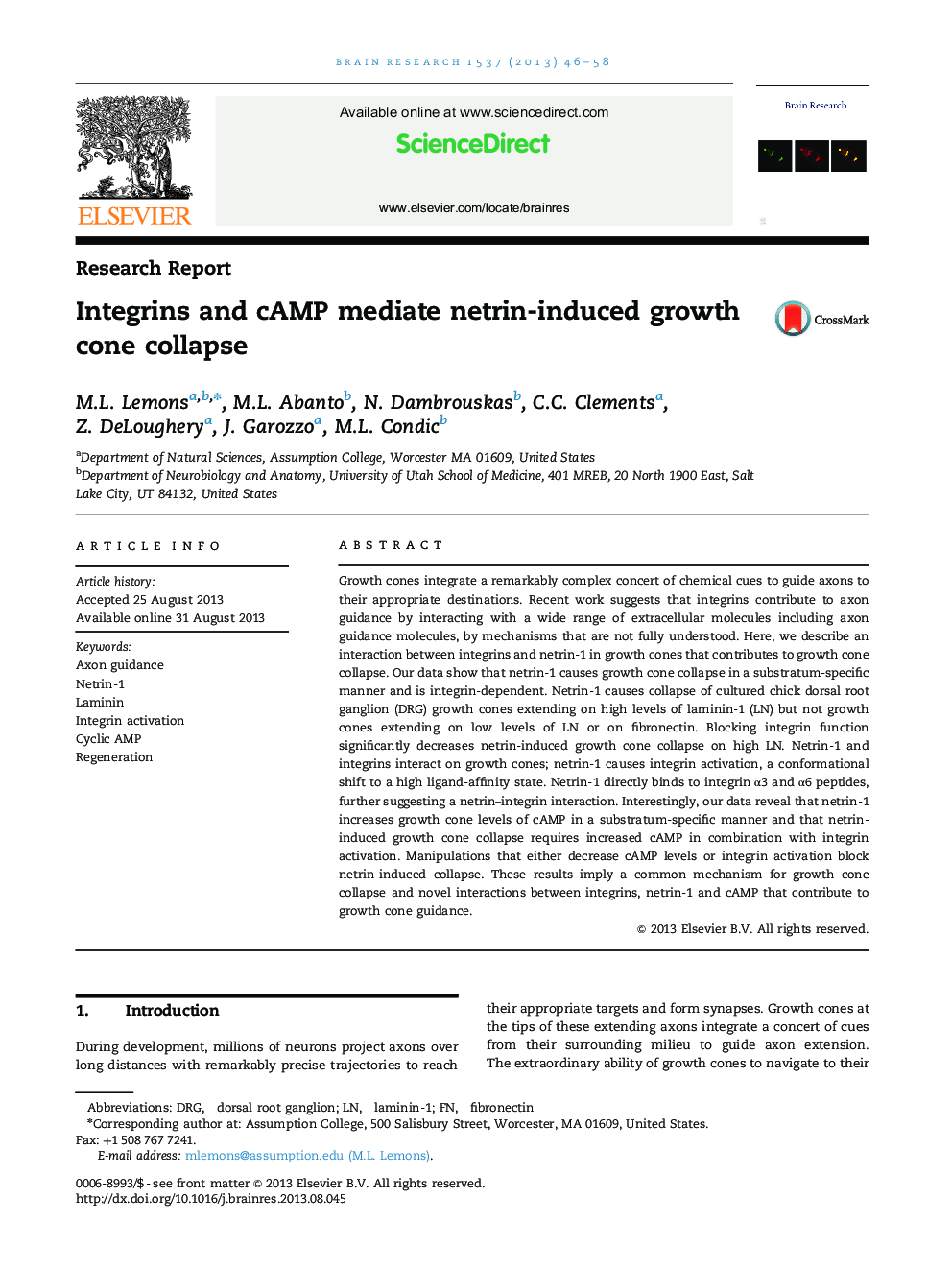| Article ID | Journal | Published Year | Pages | File Type |
|---|---|---|---|---|
| 6263521 | Brain Research | 2013 | 13 Pages |
â¢Netrin-1 causes substratum-specific growth cone collapse of cultured chick neurons.â¢Netrin-1 activates integrins on growth cones and directly binds to integrin peptides.â¢Specific integrin subunits are necessary for netrin-mediated growth cone collapse.â¢Netrin-1 elevates [cAMP]i in a substratum-specific and integrin-dependent manner.â¢Elevated [cAMP]i contributes to netrin-mediated growth cone collapse.
Growth cones integrate a remarkably complex concert of chemical cues to guide axons to their appropriate destinations. Recent work suggests that integrins contribute to axon guidance by interacting with a wide range of extracellular molecules including axon guidance molecules, by mechanisms that are not fully understood. Here, we describe an interaction between integrins and netrin-1 in growth cones that contributes to growth cone collapse. Our data show that netrin-1 causes growth cone collapse in a substratum-specific manner and is integrin-dependent. Netrin-1 causes collapse of cultured chick dorsal root ganglion (DRG) growth cones extending on high levels of laminin-1 (LN) but not growth cones extending on low levels of LN or on fibronectin. Blocking integrin function significantly decreases netrin-induced growth cone collapse on high LN. Netrin-1 and integrins interact on growth cones; netrin-1 causes integrin activation, a conformational shift to a high ligand-affinity state. Netrin-1 directly binds to integrin α3 and α6 peptides, further suggesting a netrin-integrin interaction. Interestingly, our data reveal that netrin-1 increases growth cone levels of cAMP in a substratum-specific manner and that netrin-induced growth cone collapse requires increased cAMP in combination with integrin activation. Manipulations that either decrease cAMP levels or integrin activation block netrin-induced collapse. These results imply a common mechanism for growth cone collapse and novel interactions between integrins, netrin-1 and cAMP that contribute to growth cone guidance.
